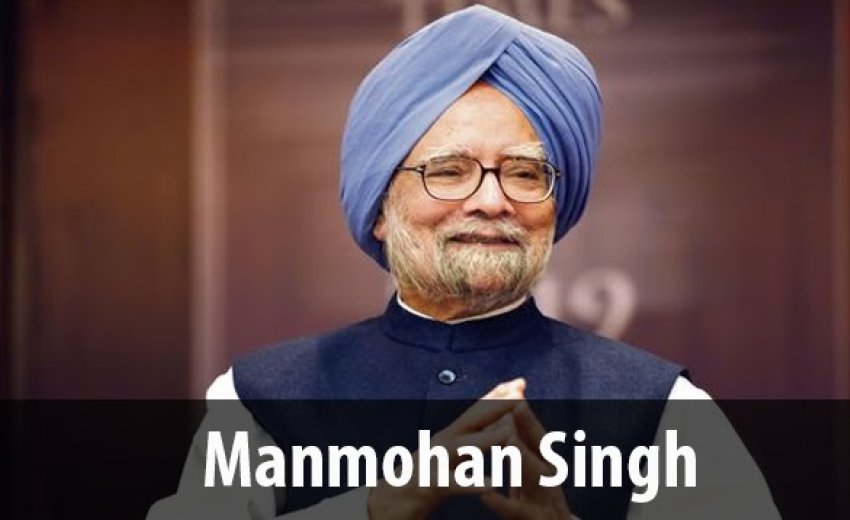Joginder Singh Kanwal, a resident of Fiji, was once asked why the Prime Minister of India Dr. Manmohan Singh wore a turban of blue colour. He replied that’s because the PM sticks to one colour to showcase his consistency of economic and political ideologies.
When someone asked Joginder about the various coloured turbans he wore on different days, he simply smiled and explained that he did it to add more colour to Fiji's diverse society. His response made the person laugh in a cheerful Fijian way before Joginder hopped into his taxi.
Dr Manmohan Singh coming to power
In 2009, Mrs. Sonia Gandhi, the leader of India's largest political party, announced that Dr. Manmohan Singh would become India's Prime Minister for a second term, following a remarkable victory in the general elections. This declaration sparked jubilation among his supporters in Punjab, who enthusiastically chanted "SINGH IS KING." Dr Manmohan Singh's return to the prime ministership for a second term is a real-life development that has surprised people around the world. It's worth mentioning that Sikhs make up just a small fraction, approximately 2 percent, of India's vast population of 1.2 billion.
Being from a minority group and getting elected as the most powerful person for the second time in the world's biggest democracy is astonishing to those who value democracy. The first time this happened was with Barack Obama when American voters chose him as their leader without being concerned about his ethnicity or race. President Obama congratulated Dr Singh on his second-term inauguration, commending India for completing the world's largest democratic election, which he saw as a testament to India's strong democracy.
Dr Manmohan Singh’s early age
Dr. Singh, born on September 26, 1932, in the village of Gah, which is now part of Pakistan, began his education in the local village school. However, during the partition of India, he moved with his family to Amritsar, a city known for its iconic Golden Temple, where he continued his studies in schools and colleges affiliated with the University of Punjab.
Economics was his favourite subject, and he excelled in it. As a student at Khalsa College in Amritsar, he achieved top honours in his BA and MA examinations. Following this success, he journeyed to Cambridge, where he pursued his interest in economics at St John's College, ultimately earning his Ph.D. from the University of Oxford. Upon returning to India, he embarked on a career in academia, serving as a lecturer in esteemed institutions like the Delhi School of Economics, where he would commute to teach economics classes on his trusty bicycle.
The Government of India recognized his talent and appointed him as an economic adviser in the Ministry of Foreign Trade. From there, he steadily climbed the ladder of success, eventually reaching the pinnacle by becoming the Prime Minister of India in May 2004, making him the first Sikh to hold this esteemed position.
As an internationally respected economist, he was well-versed in his objectives and understood the government's aims. During his first five-year term, his administration's economic reforms spurred significant growth in the rural economy. By enhancing rural infrastructure and achieving a remarkable growth rate of 9%, India emerged as the world's fastest-growing major economy. This progress extended across all sectors, including agriculture, healthcare, and education, marking positive improvements for the nation as a whole.
Becoming the Prime Minister of India
Manmohan Singh, born on September 26, 1932, is an Indian leader known for his roles as a politician, economist, educator, and government official. He held the position of India's Prime Minister from 2004 to 2014, making him the country's 13th Prime Minister. In terms of tenure, he stands as the third-longest-serving Prime Minister in India's history, following Jawaharlal Nehru and Indira Gandhi. Notably, he was a member of the Indian National Congress and held the distinction of being the first Sikh and non-Hindu individual to serve as India's Prime Minister. Furthermore, he achieved the unique feat of being re-elected as Prime Minister after successfully completing a full five-year term, a milestone previously reached only by Jawaharlal Nehru.
In 2004, Dr. Manmohan Singh became the Prime Minister for the first time. He again became the Prime Minister in 2009. He is polite and pleasant, respectful and tolerant but the most striking qualities of his character are his honesty and simplicity. After a resounding election triumph in 2009, he has become stronger and his faith in Sikh scriptures will keep him in high spirits. He wishes to help the poor and downtrodden and wants to improve their economic condition. Perhaps he is inspired daily by the last words of Sikh prayers.
Nanak naam, chardhi kala, tere bhane sarbat da bhala.
O'God ! through Nanak ( Guru Nanak) may your Name be exalted. May all the human beings of the world prosper by Thy grace.
Dr. Manmohan Singh's commitment to Sikh scriptures and the ethos of Chardi Kala, representing unwavering optimism and resilience, influenced his leadership.As a statesman and scholar, his contributions to India's progress and global recognition have forged a lasting legacy. His life story remains an inspirational embodiment of hard work, integrity, and a dedication to serving humanity.
*Based on an article by Joginder Singh Kanwal published in Fiji Times on 1st June 2009.

